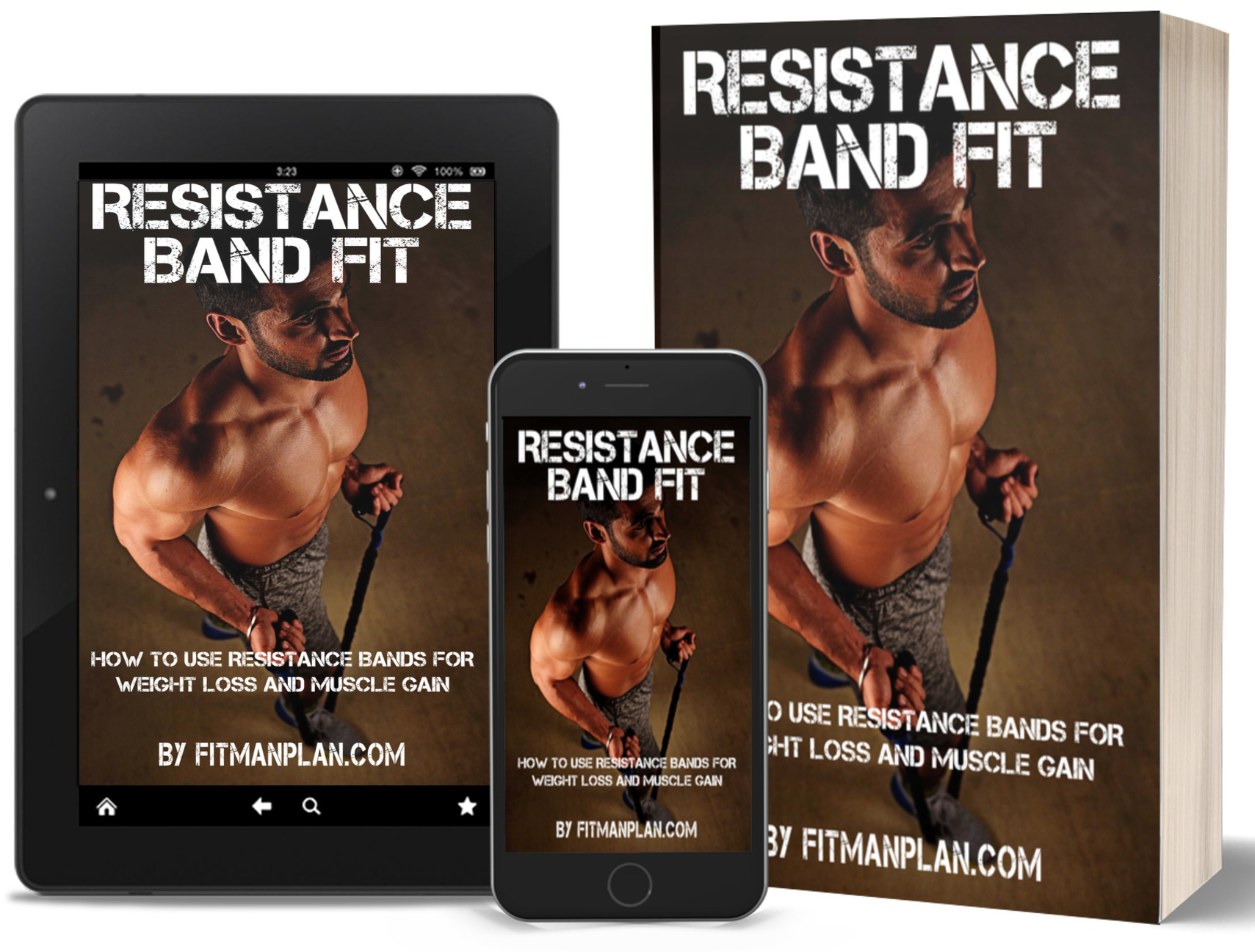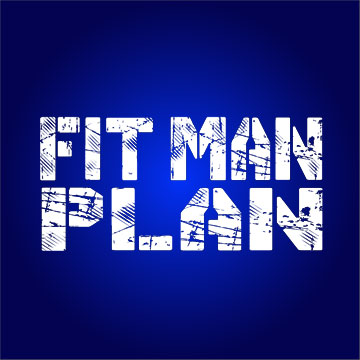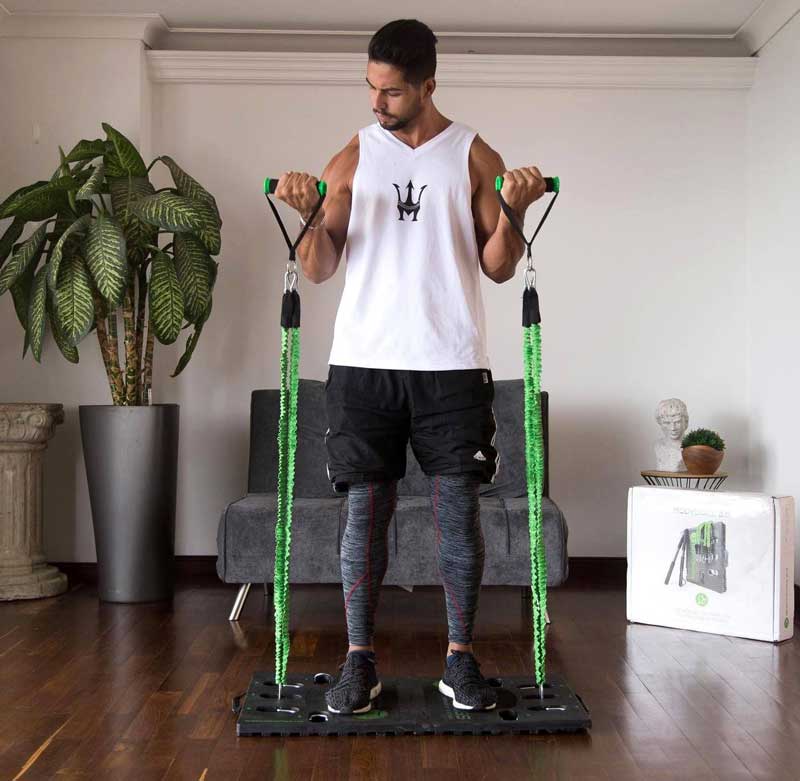Are resistance bands effective? Resistance bands often get a bad rap among the serious body builders, but they have been proven to be an effective way to get in shape. Even serious body builders can find uses for them as you will see. How good is resistance band training? Read on to find out.
Dumbbells, barbells, and resistance training machines give a great workout but the problem is that they are heavy, stationary and require lots of space and they are more expensive. So typically if you want to use them you need to take a trip to a fitness center and workout along side of everyone else. Resistance bands address all of those issues, but, is resistance training as good as weight training?
When we talk about resistance bands, there are really two types. There are the flat late band-type, which is what you typically get when you do any sort of rehabilitation of injured body parts. Then there are the tubing shaped bands. In this guide we are talking mostly about the tubing shaped bands. Both will work but the tubing has more options for exercises.
Why Resistance Bands Are Better Than Weights?
Okay, so resistance bands aren’t necessarily better than weights but they each have their own advantages and disadvantages.
Resistance bands are definitely better than weights if your idea of weights are machines that don’t allow a free range of motion. Fitness machines are okay but they don’t give you as wide of a range of muscle development. Free weights and resistance bands both use other stabilizer muscles that are forced into play when using them. If you’ve ever used resistance bands, when your making the retreating motion on an exercise where you are releasing tension on the band, you know the return path is not always in a smooth straight line as it is with an exercise machine. This is a good thing since it works muscles you normally would not impact.
We like resistance tubes for these reasons:
- They are more portable so you can take them everywhere you go. Feel like working out in a park by the lake? You can easily do that with bands.
- They are low-cost so you can buy multiple sets. Keep a set in your car or your travel bag so you can workout anytime, anywhere.
- Resistance bands are much more versatile than weights. There are many exercises that would be a challenge to do with weights.
- They take up very little space. They don’t have to be part of your home decor like exercise machines.
- Since aren’t restricted by gravity like weights, you can work muscles at different angles than you can with weights. This tends to make the workout easier on some of your joints. It quite often engages your core muscles better as well.
Resistance Band FAQs
Are there different types of resistance bands?
There are several types of resistance bands. Technically there are bands and tubes. The bands are wide and flat, where the tubes are circular and tube-shaped. They are made of latex rubber or non-latex rubber for people who have latex allergies. There are also tube bands that are covered with heavy-duty protective nylon sleeves to protect that bands and you if they snap.
There are also kits that have other accessories to go along with your resistance bands. Most commonly in these kits you will get ankle straps, removable handles, and a door anchor handle, plus a carrying bag for everything. Sometimes you will see something called a band guard that you use to protect the band if you want to wrap it around a hard surface.
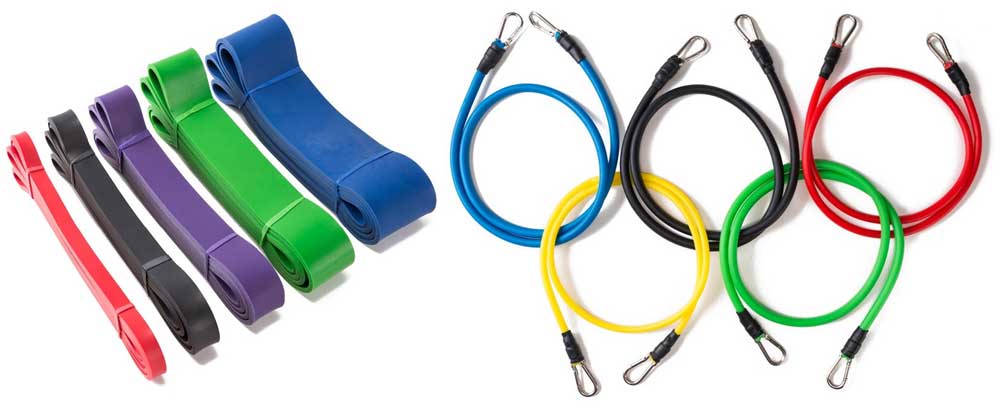
Other optional accessories available:
- Wall anchors that bolt to a wall if you want a permanent anchor point on the wall
- Resistance band bar attachment for simulating a weighted barbell
- Angled resistance band bar for exercises that require pushing down
- Wall storage racks for bands
- There are elaborate kits like the BodyBoss Home Gym that have most of the above plus a base you can stand on
- You may also want to purchase a yoga mat for exercises on the floor if you don’t have a carpeted floor.
Do resistance bands work for weight loss?
A more appropriate question for this is, “Can resistance bands burn fat?”
While cardio exercise burns more calories in the short-term, building stronger muscles increases your metabolism and burns more fat. Burning fat is what you want. We have already established that resistance bands can be just as effective as weights so yes resistance bands will help you lose weight by burning fat.
Can you get big using resistance bands?
Can you get ripped with resistance bands? If you are serious about body building then you may want to incorporate more than just resistance bands in your workouts. But as shown in the research studies, resistance bands will build muscles. Alternating between free weights and resistance bands will give you the best results because as the studies show, the two work different muscle groups more effectively.
A study that compared resistance bands to Nautilus machines showed that elastic training is a viable mode of resistance exercise that can provide a training stimulus that is significantly greater than that employed in rehabilitation settings. (2)
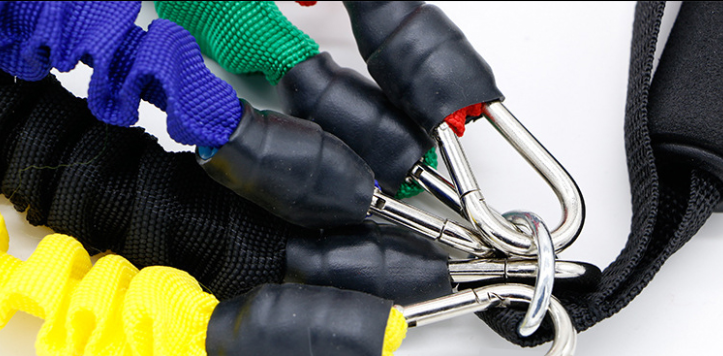
Are resistance bands good for toning?
The definition of muscle toning is to firm up muscles so they have definition and shape. The only way that happens is to build muscle and that happens in the same methods whether you are trying to be a professional body builder or just lose weight. So yes resistance bands are good for toning muscles. As discussed, resistance bands often work a different muscle group more effectively than dumbbells so they are a great addition to your workouts if you want muscle definition.
And don’t forget, you can have body builder muscles but if they are covered by fat, no one will see them. Since resistance bands strengthen muscles and that increases metabolism, which burns fat, that makes resistance bands good for toning muscles.
Are resistance bands safe?
Resistance bands are about as safe as any other method of weight bearing exercise, but like all of them, there are things to be careful of.
Can resistance bands break? There are two ways to get injured with resistance bands. One is if the band breaks, and the other is if you let go of the band while it’s under pressure.
Let’s address breakage first. You should periodically inspect your bands and look for nick, punctures, or cuts in the tube. Also look to see if there are any signs the tubes are cracking or the rubber is breaking down in any way. If you find any of these, it’s time to throw them out and get new ones. There is no way to repair a defective band.
Also make sure you check the ends where the bands connect to the handles or accessories. This is the weakest spot of a band and should be checked every time you use the bands.
The other way to get hurt is if the band snaps back at you when it slips off your foot for instance. Many resistance band kits come with special accessories to make this much less likely so it is recommended that you buy a kit that has accessories other than the bands. Never release a resistance band while it is still under tension.
Always store your bands away from sun, heat, or cold. This will keep them from breaking down quickly.
How long do resistance bands last?
The answer to this one is it depends. It depends on the quality of the bands purchased. Bands are either made of latex or latex free material but the quality of this material can vary.
Lifetime also depends on how you are using your bands. If you are threading them around a hard object then that object may cause nicks or general wear. Overstretching the bands will not only shorten the life but will also lower the resistance the band provides.
Storing your bands in an excessively high or low temperature environment or sunshine will reduce the life of the bands.
Do resistance bands stretch out? Resistance band lifetime also depends on how often you use them. The more you use them the quicker they will lose some of their resistance and wear out.
So you may get one or two years out of them, but probably not much longer.
How do I calculate calories burned during resistance training?
How many calories do you burn with resistance bands? There are general rules for calculating calories lost during strength training, but they require keeping track of the time you are lifting weights, the time of rest between reps, your body weight, and the amount of weight lifted. So there really is no hard and fast rule for calculating calorie loss during resistance training. And it really doesn’t matter anyway since the calories burned during exercise is only part of the story.
You really don’t burn as many calories during resistance training as you do during cardio, but your body continues to burn calories even hours after you are done weight lifting. When you build muscle that muscle burns calories even when you are at rest. The reason for this is that muscle tissue requires more calories to maintain than fat. (5)
So don’t worry about counting calories lost during resistance training. Just do it and focus more on they type and amount of calories you put in your body because no amount of exercise can undo a bad diet.
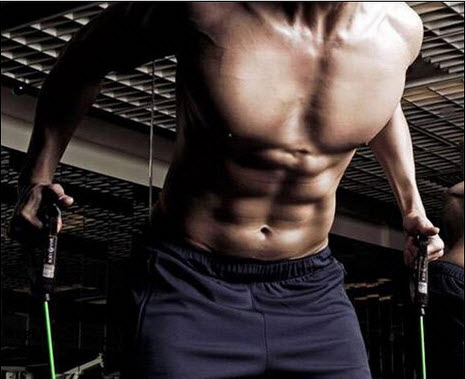
How often should you do resistance band training?
Can you do resistance training everyday? After you workout your muscles need time to recover. So hitting the same muscle groups every day is not something you want to do because your muscles need time to repair themselves. The recommended time for large muscle groups like your legs is 48 hours.
However, there are a lot of different muscle groups in your body so if you isolate different muscle groups you can exercise often, but still not every day. This way you don’t have to do long workouts and can get a full body workout.
For example, you could split your workout into chest and back, arms and shoulders, abdominals and lower back, and legs. This would give you five days of working out a week and still be acceptable.
Are resistance bands good for squats?
Why are resistance bands good for squats? The use of resistance bands for squats is more effective than doing them standalone without any weights and can be just as effective as using dumbbells. Resistance bands do for squats the same thing as dumbells. Just like holding dumbbells at shoulder height, they put extra pressure on your legs as you raise and lower from your squats.
A study also combined resistance bands with weights and the results of the study suggest that the use of elastic bands in conjunction with free weights can significantly increase peak force and peak power over free-weight resistance alone. (1)
How do you use resistance bands for squats?
- While holding the handles of the band, start by standing on the resistance band with your feet about shoulder distance apart. The handles should be at the same height on either side of your body.
- With your palms facing forward, raise the handles to next to your face so the bands are extended. You are still standing so this is your starting position.
- Slowly bend your knees and lower you thighs until they are parallel to the floor. You exhale while going down and inhale while going up.
- Now using your heels, push the body back up to the starting position. This is considered one repetition. Just repeat the process for as many times as you can.
What color resistance band is what weight?
This answer to this question will vary between manufacturers. The pull of a resistance band also changes over time.
Plus you also have to consider how far you are stretching a band. For instance if you are standing on a band with both feet to do bicep curls, the resistance will change if you move your feet further apart or bring them together.
Below is an example of two different manufacturers claims so you can see there isn’t really a standard answer to this question:
- Yellow (10 lbs), Blue (20 lbs), Green (30 lbs), Black (40 lbs), Red (50 lbs),
- Yellow (5 lbs), Green (15 lbs), Red (20 lbs), Blue (30 lbs) and Black (35 lbs).

Can resistance bands replace dumbbells?
One study that compared the use of dumbbells to resistance bands both targeting upper body muscles. Each was found to have its own benefits.
The study concluded that elastic resistance bands typically have slightly lower muscle activity for the muscles you would typically think you are targeting for flyes and reverse flyes, such as your pectoral muscles and real deltoids. But elastic bands increase muscle activation substantially for front and middle deltoids, as well as the upper trapezoid. This is possibly due to the instability of resistance band movement. (3)
Another study on exercises for the core muscles and use of resistance bands versus an exercise machine showed similar results. Resistance bands used for torso-twists showed higher muscle activity for muscles along the spine, while torso-twists on a machine showed higher activity on external oblique muscles on your sides. For the remaining core muscles both methods had similar muscle activation. The study also noted that participants preferred using the resistance bands.(4)
So the takeaway from these and other studies is that ideally you would alternate between dumbbells and resistance bands if your goal is body building. If your goal is to just lose weight and get fit, then resistance bands are a great way to do that.
Are resistance bands good for glutes?
Resistance bands can be good for glutes but it depends on the type of band. The continuous loop bands are able to do more glute exercises than the tubing type with handles. If you have a set of the tubes, you should also have a least one loop band as well.
The best loop bands for exercising glutes are the wide, flat bands. The tube type bands that are formed into a loop typically will roll up and down so you want something that stays in place.
If you are looking for good exercises for glutes, we recommend this resource from Self Magazine: A 10-Move Resistance Band Butt Workout You Can Do Anywhere
How do you use resistance bands for exercise?
How do you exercise with resistance bands? Just get our free training course called Resistance Band Fit that includes a book and videos showing you the proper way to work out using resistance bands. You can get that by clicking this link:
Free Resistance Band Training Course
In this free course you will learn how to use resistance bands for a full body workout with exercises like these:
- Bicep Curl, One Foot
- Standing Bicep Curl, Two Feet
- Standing Lateral Raise
- Squat and Raise
- Chest Presses (Anchored)
- Standing Ab Twist (Anchored)
- Sit Up With Resistance Band (Anchored)
- Sitting Front Press (Anchored)
- Side Steppers (Anchored, with ankle strap)
- Soccer Kick (Anchored, with ankle strap)
Conclusion
Resistance bands absolutely do work for anything from losing weight and getting fit, all the way to serious body building. Their portability and low cost make them available to everyone and every situation so they eliminate the excuses people have about not being able to exercise.
The work for all exercising all muscle groups in your entire body, and they have some benefits that other forms of resistance training do not offer. That makes them ideal for beginners or people who are trying to get ripped.
We recommend you start by buying a resistance band kit, which often come with a basic usage guide and you can get our Free Resistance Band Training Course that includes videos.
Resources:
1. Effects of elastic bands on force and power characteristics during the back squat exercise.; https://www.ncbi.nlm.nih.gov/pubmed/16686552
2. “Muscle Strength and Damage Following Two Modes of Variable Resistance Training”: https://www.ncbi.nlm.nih.gov/pmc/articles/PMC3761515/
3. “Muscle Activity in Upper-Body Single-Joint Resistance Exercises with Elastic Resistance Bands vs. Free Weights”:https://www.ncbi.nlm.nih.gov/pmc/articles/PMC5873332/
4. “Core Muscle Activity, Exercise Preference, and Perceived Exertion during Core Exercise with Elastic Resistance versus Machine.”https://www.ncbi.nlm.nih.gov/pubmed/26557405
5. “Can I Lose Belly Fat by Lifting Weights?”https://www.livestrong.com/article/378961-can-i-lose-belly-fat-by-lifting-weights/

Tim Bruxvoort is founder of FitManPlan.com whose mission it is to help men over 40 live the best version of their lives through fitness, nutrition, pain management, and improved life skills. He is a long-time, aging entrepreneur and health enthusiast who has experienced many of the challenges currently being faced by other men over 40 and his goal is to deliver solutions to help them achieve their fitness and health goals.
